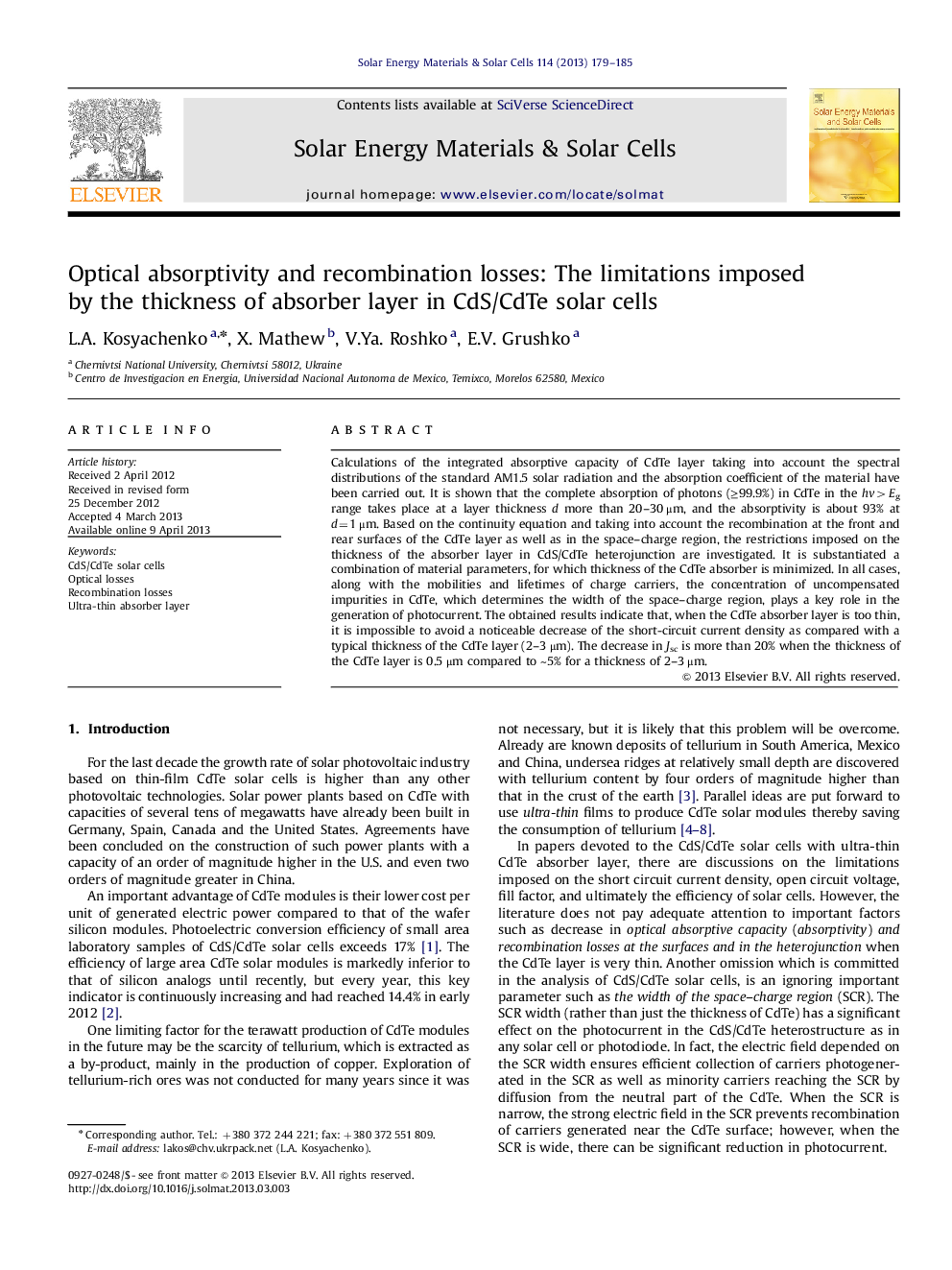| Article ID | Journal | Published Year | Pages | File Type |
|---|---|---|---|---|
| 78506 | Solar Energy Materials and Solar Cells | 2013 | 7 Pages |
► The restrictions on the CdTe thickness by surface recombination in CdS/CdTe solar cells are ascertained.► It has been substantiated a combination of parameters for which thickness of the CdTe layer is minimized.► The losses in short circuit current are 19–20% when CdTe thickness d=0.5 μm compared to 5% for d=2–3 μm.
Calculations of the integrated absorptive capacity of CdTe layer taking into account the spectral distributions of the standard AM1.5 solar radiation and the absorption coefficient of the material have been carried out. It is shown that the complete absorption of photons (≥99.9%) in CdTe in the hv>Eg range takes place at a layer thickness d more than 20–30 μm, and the absorptivity is about 93% at d=1 μm. Based on the continuity equation and taking into account the recombination at the front and rear surfaces of the CdTe layer as well as in the space–charge region, the restrictions imposed on the thickness of the absorber layer in CdS/CdTe heterojunction are investigated. It is substantiated a combination of material parameters, for which thickness of the CdTe absorber is minimized. In all cases, along with the mobilities and lifetimes of charge carriers, the concentration of uncompensated impurities in CdTe, which determines the width of the space–charge region, plays a key role in the generation of photocurrent. The obtained results indicate that, when the CdTe absorber layer is too thin, it is impossible to avoid a noticeable decrease of the short-circuit current density as compared with a typical thickness of the CdTe layer (2–3 μm). The decrease in Jsc is more than 20% when the thickness of the CdTe layer is 0.5 μm compared to ~5% for a thickness of 2–3 μm.
